The Economics and Statistics Division maintains archives of previous publications for accountability purposes, but makes no updates to keep these documents current with the latest data revisions from Statistics Canada. As a result, information in older documents may not be accurate. Please exercise caution when referring to older documents. For the latest information and historical data, please contact the individual listed to the right.
<--- Return to Archive
For additional information relating to this article, please contact:
June 02, 2017NON-RESIDENTIAL CONSTRUCTION INVESTMENT Q1 2017 [REVISED] Statistics Canada revised non-residential building construction for Q1 2017and 2016. All provinces had small upward revisions with Nova Scotia's level of investment 0.2 per cent higher than previously estimated. The following summary has been updated with the latest data.
Nova Scotia's non-residential building construction investment (seasonally adjusted) was $136.8 million in the first quarter of 2017. This was 1.6 per cent lower than the previous quarter owing to declines in commercial (-6.8 per cent) and institutional and governmental (-3.9 per cent) construction, which were partially offset by growth in the relatively smaller industrial construction category (+26.7 per cent).
Compared to the same quarter last year (Q1 2016), non-residential building construction was down 21.2 per cent. Activity was lower in industrial (-1.7 per cent) and commercial (-28.7 per cent) construction while institutional and governmental construction was up slightly (+2.0 per cent).
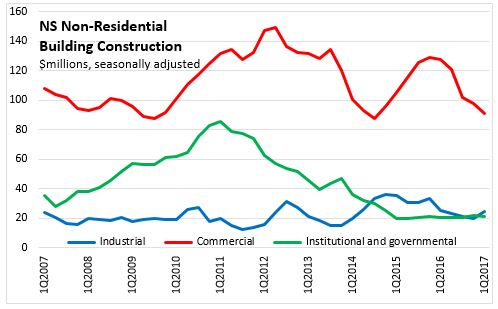
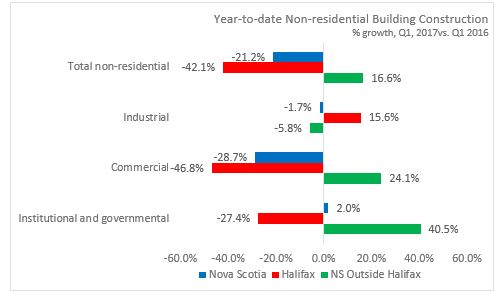
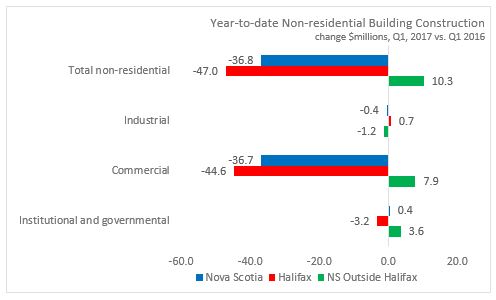
Halifax non-residential building construction was down 5.1 per cent compared to the previous quarter due to declines in commercial (-11.8 per cent) construction with partially offsetting growth in the smaller industrial (+103.1 per cent) and institutional and governmental (+6.0 per cent) construction categories. Outside of Halifax, non-residential building construction increased 1.7 per cent in the quarter, with growth in industrial construction (+14.3 per cent) and commercial (+0.2 per cent) while institutional and governmental construction (-9.6 per cent) declined.
Compared to the first quarter of 2016, Halifax non-residential construction was down 42.1 per cent, with declines in commercial and institutional and governmental construction. Over the same period, non-residential investment outside of Halifax was up 16.6 per cent, boosted by commercial and institutional construction.
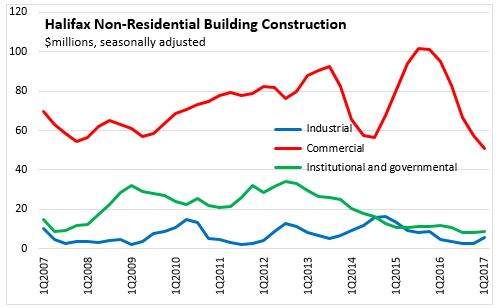
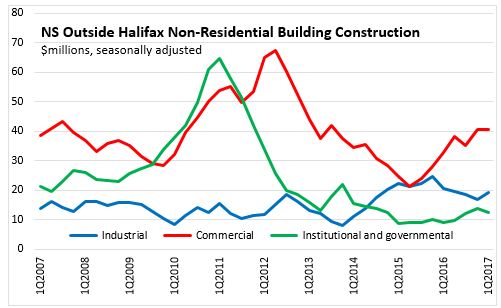
In Canada, non-residential building construction decreased slightly in the first quarter of 2017 (-0.3 per cent) continuing a general downward trend since the beginning of 2015. Construction activity for the quarter was down 0.5 percent for industrial building construction, attributable to lower investment in farm and maintenance building construction, offsetting growth in manufacturing plant construction. Commercial building investment was up 0.2 per cent with increased spending on construction of recreation centres, office buildings and warehouses offset by a decline in investment in shopping centres and restaurants. Institutional building construction was down 1.1 per cent in the quarter with declining investment in educational buildings and healthcare facilities.
Compared to the first quarter of 2016, Canadian non-residential building construction was down 0.6 per cent, with declines in industrial (-4.5 per cent) and commercial (-0.4 per cent) construction partially offset by growth in institutional and governmental construction (+1.2 per cent).
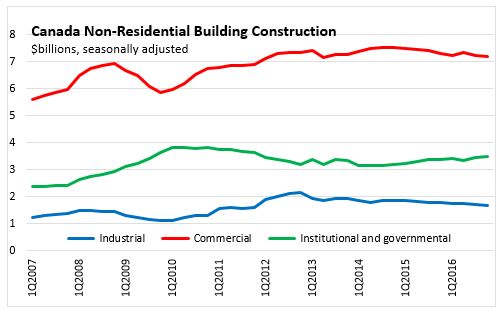
In the first quarter 2017, non-residential building construction was down in five provinces. Manitoba posted the largest percentage increase while the largest decline was seen Saskatchewan.
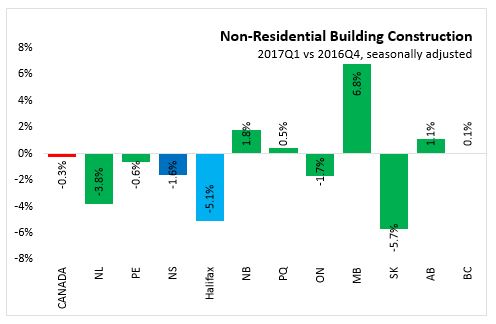
Comparing the first quarter of 2017 to the same period in 2016, non-residential building construction was down in six provinces including Nova Scotia, with the largest decline in Newfoundland and Labrador. Prince Edward Island, New Brunswick, Quebec, and Manitoba posted increases.
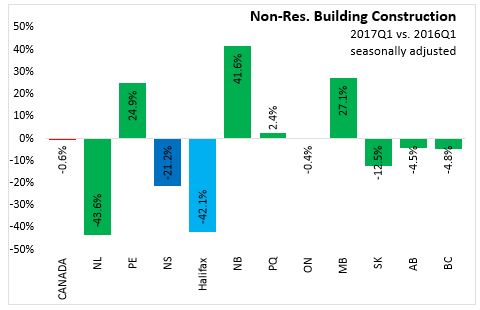
Statistics Canada CANSIM 026-0016
<--- Return to Archive